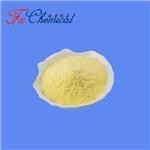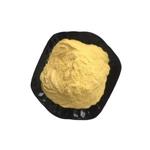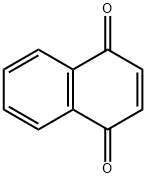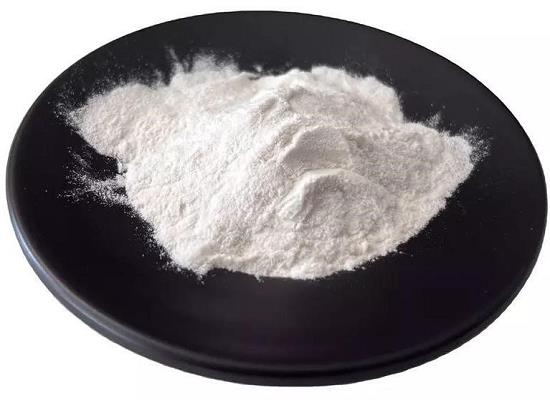1,4-Naphthoquinone: Biological Activity and Biomedical Applications
General Description
Over the past decade, a number of new 1,4-naphthoquinones have been isolated from natural sources and new 1,4-naphthoquinones with diverse structural features have been synthesized. Cardioprotective, anti-ischemic, hepatoprotective, neuroprotective and some other new properties were found for these compounds; their role in protecting against neurodegenerative diseases has been established. Their anti-inflammatory, antimicrobial and antitumor activities have been studied in more detail; new, previously unknown intracellular molecular targets and mechanisms of action have been discovered. Some compounds of this class are already being used as a medicinal drugs and some substances can be used as biochemical tools and probes for non-invasive detection of pathological areas in cells and tissues in myocardial infarction and neurodegenerative diseases using modern molecular imaging techniques.1

Figure 1. 1,4-Naphthoquinone
Biological Activity
Historical Overview
1,4-Naphthoquinones are common metabolites of plants, animals, fungi and bacteria. The range of biological effects of natural and synthetic 1,4-naphthoquinones is diverse and includes antimicrobial, antifungal, antiviral, antiprotozoal, wound healing, cytotoxic, antitumor and some other properties. Historically, natural naphthoquinones such as lawsone, juglone and lapachol were among the first to be investigated.1
Cardioprotective and Anti-ischemic Effects
The polyhydroxynaphthoquinones of the naphthazarin group (5,8-dihydroxy-1,4-naphthoquinone) occupy a special place among naphthoquinones. A distinctive feature of these compounds is their ability to effectively intercept free radicals and bind the Fe2+ ions responsible for the formation of reactive oxygen forms, the excessive content of which in the body leads to the development of various pathological conditions. It is believed that the cardioprotective properties of naphthoquinones are due to their antioxidant effect. 1
Antimicrobial Activity
There are on-going studies on the antimicrobial activity of 1,4-naphthoquinones in relation to various microbial pathogens that are dangerous as sources of fatal diseases, epidemics and nosocomial infections.
In some cases, not only the direct effect of new compounds on microbial cells was investigated, but also their effect on the viability of biofilms formed by reproducing microorganisms. Thus, several closely composed new 2-hydroxy-3-phenylsul-fanylmethyl-1,4-naphthoquinones were synthesized and evaluated against Gram-negative and Gram-positive bacterial strains and their biofilms to probe for potential lead structures.
The structure modification applied in the series resulted in 12 new naphthoquinones with pronounced antimicrobial activity against Escherichia coli and Pseudomonas aeruginosa. Four molecules showed antibiofilm properties, among which improved the inhibition of biofilm formation by more than 60% with a better profile than the standard antibacterial drug, ciprofloxacin.1
Biomedical Applications
Alzheimer's Disease Imaging
Recent clinical approvals of brain imaging radiotracers targeting amyloid-β provided clinicians the tools to detect and confirm Alzheimer’s disease pathology without autopsy or biopsy. While current imaging agents are effective in postsymptomatic Alzheimer’s patients, there is much room for improvement in earlier diagnosis, hence prompting a need for new and improved amyloid imaging agents.
YoungSoo Kim team synthesized 41 novel 1,4-naphthoquinone derivatives and initially discovered 14 antiamyloidogenic compounds via in vitro amyloid-β aggregation assay; however, qualitative analyses of these compounds produced conflicting results and required further investigation. Follow-up docking and biophysical studies revealed that four of these compounds penetrate the blood-brain barrier, directly bind to amyloid-β aggregates, and enhance fluorescence properties upon interaction. These compounds specifically stain both diffuse and dense-core amyloid-β plaques in brain sections of APP/PS1 double transgenic Alzheimer’s mouse models. Results suggest 1,4 naphthoquinones as a new scaffold for amyloid-β imaging agents for early stage Alzheimer's.2
References:
[1] NAEWOO NEO SHIN. Fluorescent 1,4-Naphthoquinones To Visualize Diffuse and Dense-Core Amyloid Plaques in APP/PS1 Transgenic Mouse Brains[J]. ACS Chemical Neuroscience, 2019, 10 6: 2623-3044. DOI:10.1021/acschemneuro.9b00093.Lastest Price from 1,4-Naphthoquinone manufacturers

US $0.00/KG2025-04-21
- CAS:
- 130-15-4
- Min. Order:
- 25KG
- Purity:
- 98%min
- Supply Ability:
- 30tons/month

US $6.00/kg2025-04-21
- CAS:
- 130-15-4
- Min. Order:
- 1kg
- Purity:
- 99%
- Supply Ability:
- 2000KG/Month


